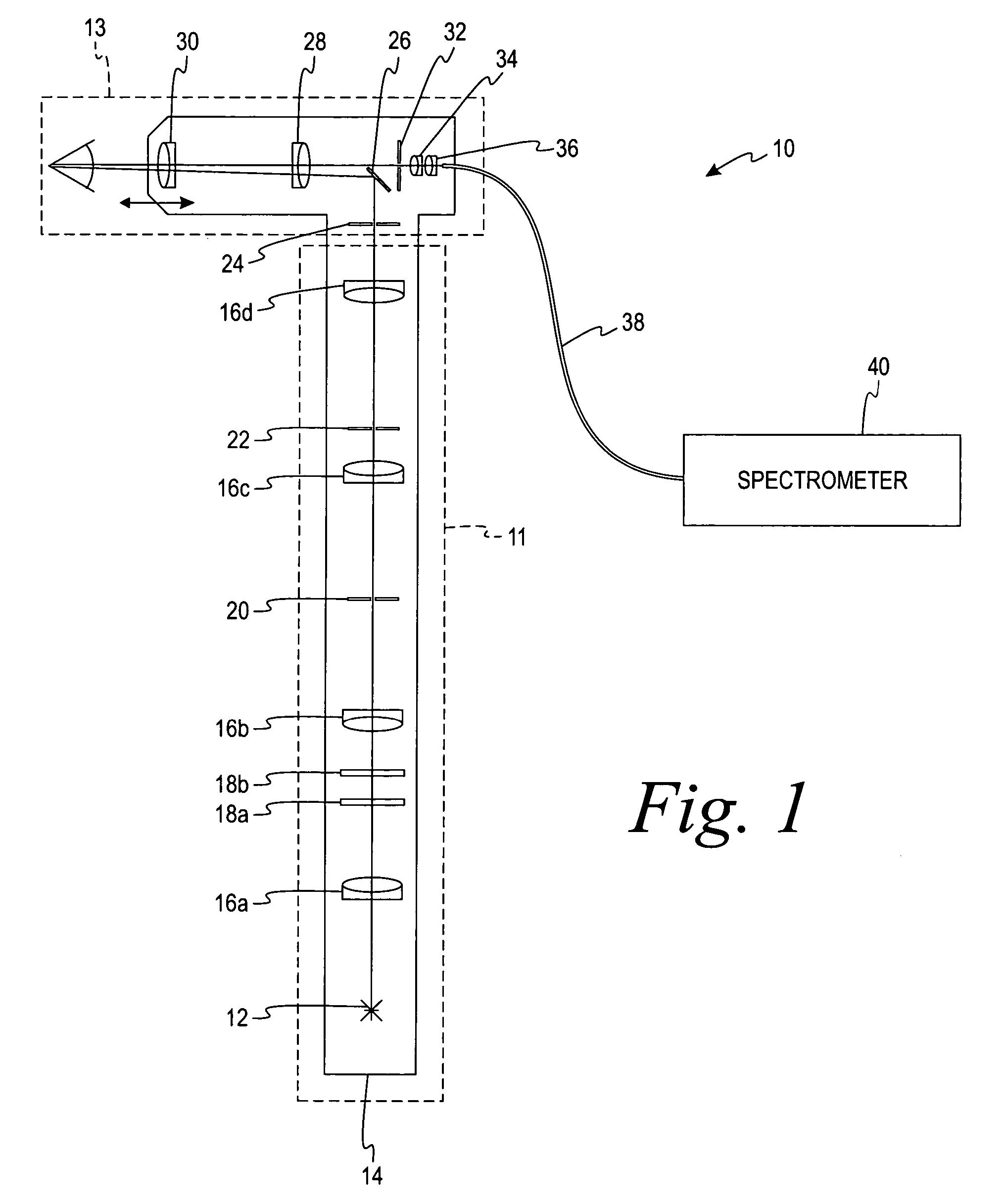Reflectometry instrument and method for measuring macular pigment
a technology of reflectometry and macular pigment, which is applied in the field of reflectometry instruments, can solve the problems of affecting vision, affecting vision, and affecting the ability of people with macular degeneration to read, recognize faces, and drive safely on unfamiliar surfaces, and achieves the effects of impairing or damaging eyesight and vision, and only providing coarse resolution to surrounding parts of the macula
- Summary
- Abstract
- Description
- Claims
- Application Information
AI Technical Summary
Benefits of technology
Problems solved by technology
Method used
Image
Examples
Embodiment Construction
[0040]FIG. 1 illustrates a reflectometry instrument 10 adapted to measure the characteristics of a human eye. The reflectometry instrument 10 will be described in reference to two main portions—a source system 11 and a beam separation system 13. The source system 11 includes a light source 12, a plurality of source lenses 16, filters 18, a filament mask 20, and a retinal stop 22. The source system 11 generates an illumination beam having certain characteristics that will be transmitted to the patient's eye. As mentioned above, the reflectometry instrument 10 may be used on an undilated pupil, making the system much easier to use and decreasing the time required to test a patient.
[0041]The beam separation system 13 includes an illumination pupil mask 24, a mirror 26, a first lens 28, a second lens 30, a detection pupil mask 32, a third lens 34, and a fourth lens 36. The beam separation system 13 is used for providing an illumination beam to the patient's eye and receiving a detection...
PUM
 Login to View More
Login to View More Abstract
Description
Claims
Application Information
 Login to View More
Login to View More - R&D
- Intellectual Property
- Life Sciences
- Materials
- Tech Scout
- Unparalleled Data Quality
- Higher Quality Content
- 60% Fewer Hallucinations
Browse by: Latest US Patents, China's latest patents, Technical Efficacy Thesaurus, Application Domain, Technology Topic, Popular Technical Reports.
© 2025 PatSnap. All rights reserved.Legal|Privacy policy|Modern Slavery Act Transparency Statement|Sitemap|About US| Contact US: help@patsnap.com



